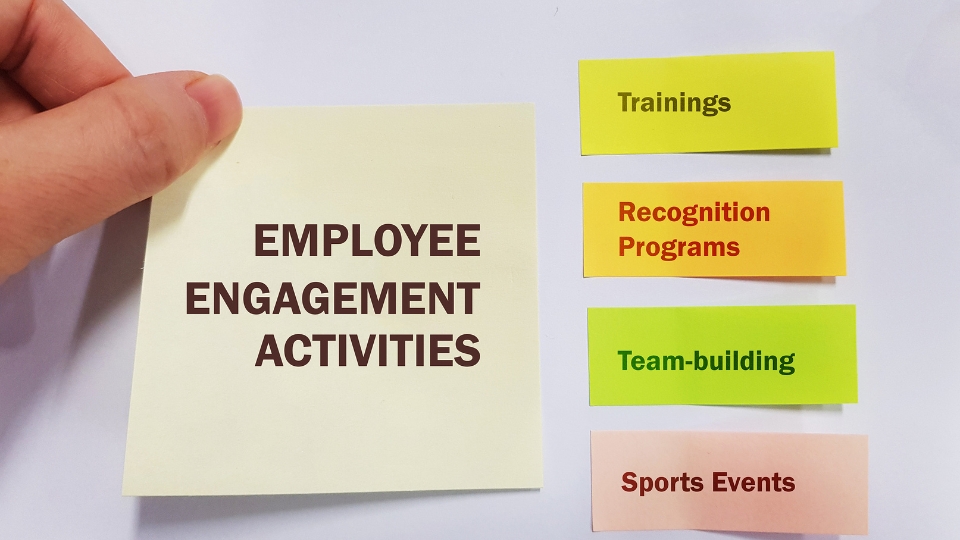How to Actually Evaluate Company Culture: A Comprehensive Guide

In today’s competitive job market, understanding company culture is more important than ever. It’s no longer just about salary and benefits when considering a job or choosing a company to do business with. Culture plays a pivotal role in determining employee satisfaction, performance, and long-term organizational success.
Company culture refers to the values, beliefs, behaviors, and practices that define how a company operates and functions. It influences everything from the way employees interact to the company’s approach to innovation and customer relations. For prospective employees, evaluating a company’s culture is crucial for ensuring that their values align with the company’s ethos. For leaders and managers, fostering and sustaining a strong, positive culture is essential to driving productivity and retaining top talent.
But how exactly can you evaluate a company’s culture? This post will explore actionable steps to assess company culture thoroughly and help you make informed decisions about your career or business partnerships.
Why Company Culture Matters
Before diving into how to evaluate company culture, it’s essential to understand why it matters. A positive company culture:
- Boosts Employee Engagement: Employees who resonate with a company’s culture are generally more engaged, motivated, and productive.
- Improves Retention: Companies with strong cultures tend to have lower turnover rates because employees feel valued and supported.
- Drives Innovation: A culture of collaboration, respect, and openness fosters creativity and innovation.
- Enhances Brand Reputation: Companies with great cultures are often recognized as desirable places to work, which can attract top talent and loyal customers.
Now that we understand the importance of company culture, let’s explore how to evaluate it effectively.

1. Research the Company’s Values and Mission
One of the first steps in evaluating company culture is to examine its core values and mission statement. Most companies will have this information readily available on their website, often under sections like “About Us” or “Our Story.” These values should align with the company’s behavior, policies, and day-to-day operations.
To evaluate whether a company’s stated values match its actual culture, look beyond just the words. Pay attention to:
- Consistency: Does the company consistently demonstrate its values through its actions, such as its community involvement, business decisions, or employee recognition programs?
- Clarity: Are the company’s values clearly communicated to employees at all levels? If the company promotes a value like “transparency,” does it apply that value across its operations, including communication with employees and customers?
- Genuineness: Is there evidence that the company’s leadership and employees truly believe in the stated values, or do they seem like a marketing tool?
A mismatch between a company’s stated values and its actual behavior is often a red flag.

2. Assess Employee Engagement and Satisfaction
Employee engagement is one of the most direct indicators of company culture. If employees are engaged and satisfied, they are likely to be happy with the workplace environment, and the company culture is expected to be strong.
To assess employee engagement and satisfaction, consider:
- Employee Surveys: Many companies conduct employee surveys to assess job satisfaction and gather feedback on company culture. Check if the company publishes results from these surveys or shares them with employees.
- Turnover Rates: High employee turnover can be a sign of poor culture. If employees frequently leave, it may indicate dissatisfaction with leadership, management, or the work-life balance.
- Employee Testimonials and Reviews: Websites like Glassdoor or Indeed offer insights from current and former employees. Reviews can provide a good sense of the company culture and highlight potential red flags or positive aspects of the workplace environment.

3. Observe Leadership and Management Styles
Leadership plays a crucial role in shaping company culture. The way leaders communicate, make decisions, and interact with employees directly impacts the organization’s overall culture. To evaluate a company’s culture, observe the following aspects of leadership:
- Leadership Communication: How do company leaders communicate with employees? Do they maintain an open-door policy? Are they transparent in their decision-making process? Clear, honest communication from leadership is often a reflection of a strong, positive culture.
- Approachability and Support: Are leaders approachable and supportive? Do they provide mentorship and guidance, or are they distant and uninvolved? Strong leadership fosters a culture of support and empowerment.
- Employee Recognition: How does the company recognize and reward employees? A good company culture celebrates achievements, big or small. If the company fails to recognize employee contributions, it may indicate a lack of appreciation for its workforce.
By observing these leadership qualities, you can gauge the company’s commitment to fostering a positive culture.

4. Look at Work-Life Balance
A key component of company culture is its support for employees’ work-life balance. Companies that prioritize employee well-being typically offer flexibility and policies that help employees manage both their personal and professional lives.
To assess work-life balance:
- Flexible Hours and Remote Work: Does the company offer flexible working hours or remote work options? In today’s world, companies that allow employees to choose where and when they work tend to have a more progressive culture.
- Vacation and Time-Off Policies: Review the company’s policies on vacation, sick days, and personal time off. Are employees encouraged to take time off when needed, or do they feel pressured to work long hours without breaks?
- Employee Well-Being Programs: Some companies offer wellness programs, mental health resources, or fitness incentives. These initiatives are a testament to the company’s commitment to its employees’ overall well-being and work-life balance.

5. Evaluate the Workplace Environment and Physical Space
The physical workspace plays a crucial role in shaping a company’s culture. It can directly impact employee productivity, collaboration, and morale. When evaluating a company’s culture, consider the following:
- Office Layout: Is the office layout open and collaborative, or is it more traditional with cubicles and isolated spaces? Open, collaborative spaces often promote a culture of teamwork and communication.
- Amenities and Comfort: Does the company provide comfortable workspaces with amenities like break rooms, wellness rooms, or quiet areas? These can contribute to a positive and supportive workplace culture.
- Decor and Aesthetics: The design of the workspace can reflect the company’s values. A creative, colorful, and dynamic environment may suggest an innovative and flexible culture, while a more rigid, sterile environment may signal a more traditional or hierarchical approach.

6. Observe Employee Interactions
How employees interact with one another and their leaders is a strong indicator of a company’s culture. A positive, collaborative culture encourages open communication, teamwork, and mutual respect.
When evaluating employee interactions, look for:
- Collaboration and Teamwork: Do employees work well together, or is there a competitive and siloed environment? Collaboration is often a sign of a strong, inclusive culture.
- Respect and Inclusivity: How do employees treat one another? A healthy company culture values diversity and inclusion. Employees should feel respected and valued, regardless of their background or role.
- Workplace Social Activities: Does the company encourage social activities like team lunches, happy hours, or volunteer events? These types of activities promote a sense of community and contribute to a positive work environment culture.

7. Review Company Policies and Practices
Ultimately, reviewing the company’s policies and practices can offer valuable insights into its culture. The policies should reflect the values and principles the company espouses. Look for:
- Diversity and Inclusion Policies: Does the company have a strong commitment to diversity and inclusion, both in hiring practices and day-to-day operations? Inclusive cultures create more opportunities for growth and engagement.
- Professional Development Opportunities: Does the company invest in employee growth through training, workshops, or mentorship programs? A culture that supports continuous learning is often forward-thinking and progressive.
- Ethical Standards: Does the company have clear ethical guidelines and a code of conduct? Companies that prioritize ethics are likely to have a culture of trust and transparency.

Conclusion
Evaluating company culture is a critical step in choosing a workplace that aligns with your values and professional goals. It requires careful observation and consideration of various factors, including the company’s values, leadership, employee engagement, work-life balance, and physical environment. A strong, positive culture fosters engagement, retention, and innovation, while a poor culture can lead to high turnover, low morale, and a lack of motivation.
By conducting thorough research and paying attention to these key indicators, you can make an informed decision about whether a company’s culture is a good fit for you. Whether you’re looking to join a new organization or assessing a current business partnership, evaluating company culture is crucial for long-term success and satisfaction.
Remember, a company’s culture is more than just a set of values on paper—it’s about the day-to-day experiences and interactions that shape the overall work environment. Take the time to assess these factors, and you’ll find a company that truly aligns with your values and career aspirations
Our blog
Lastest blog posts
Tool and strategies modern teams need to help their companies grow.What Employers Really Want from Cover Letters
In today’s competitive job market, your cover letter is often the first point of contact between you and a potential...
December 4, 2025
By FxCareer
The Importance of a Professional Portfolio for Creative Role
In today’s fast-paced, competitive job market, creative professionals must possess not only the necessary skills and knowledge but also a...
December 1, 2025
By FxCareer
Why Job Seekers Should Care About Company Culture: A Guide to Finding the Right Fit
While looking for a job, candidates should consider aspects of employment, including compensation, benefits, and job duties. Though they carry...
November 24, 2025
By FxCareer

Join 2,000+ subscribers
Stay in the loop with everything you need to know.




